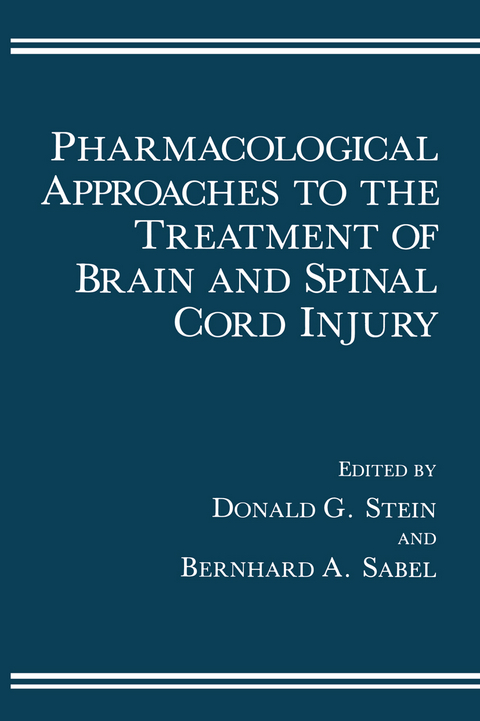
Pharmacological Approaches to the Treatment of Brain and Spinal Cord Injury
Springer-Verlag New York Inc.
978-1-4612-8249-5 (ISBN)
1. Therapeutic Approaches in Subjects with Brain Lesions.- 2. Arachidonic Acid Metabolites and Membrane Lipid Changes in Central Nervous System Injury.- 3. Experimental Spinal Cord Injury: Strategies for Acute and Chronic Intervention Based on Anatomic, Physiological, and Behavioral Studies.- 4. Serotonin Antagonists Reduce Central Nervous System Ischemic Damage.- 5. Opiate Antagonists in CNS Injury.- 6. Adaptive Changes in Central Dopaminergic Neurons after Injury: Effects of Drugs.- 7. Catecholamines and Recovery of Function after Brain Damage.- 8. Ganglioside Involvement in Membrane-Mediated Transfer of Trophic Information: Relationship to GM1 Effects following CNS Injury.- 9. Anatomic Mechanisms whereby Ganglioside Treatment Induces Brain Repair: What Do We Really Know?.- 10. Gangliosides and Functional Recovery from Brain Injury.- 11. Acute Ganglioside Effects Limit CNS Injury: Functional and Biochemical Consequences.- 12. A Rationale for the Use of Melanocortins in Neural Injury.- 13. Developmental Neurobiology and Physiopathology of Brain Injury.- 14. Growth-Associated Triggering Factors and Central Nervous System Response to Injury.- 15. Growth Factor Induction and Order of Events in CNS Repair.- 16. Nerve Growth Factor: Effects on CNS Neurons and on Behavioral Recovery from Brain Damage.- 17. Recovery from Stroke.
| Erscheint lt. Verlag | 17.9.2011 |
|---|---|
| Zusatzinfo | XXII, 386 p. |
| Verlagsort | New York, NY |
| Sprache | englisch |
| Maße | 152 x 229 mm |
| Themenwelt | Sachbuch/Ratgeber ► Natur / Technik ► Garten |
| Medizin / Pharmazie ► Medizinische Fachgebiete ► Neurologie | |
| Medizin / Pharmazie ► Medizinische Fachgebiete ► Pharmakologie / Pharmakotherapie | |
| Medizin / Pharmazie ► Pharmazie | |
| ISBN-10 | 1-4612-8249-7 / 1461282497 |
| ISBN-13 | 978-1-4612-8249-5 / 9781461282495 |
| Zustand | Neuware |
| Haben Sie eine Frage zum Produkt? |
aus dem Bereich


